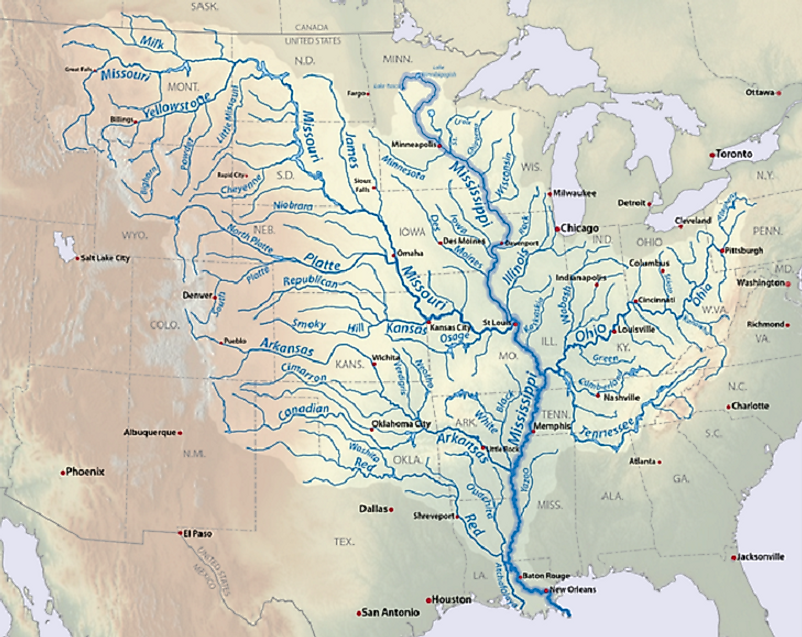What Are Watersheds And Drainage Basins?

5. Watersheds, Defined
Alternatively known as a drainage area or catchment area, a watershed refers to the area drained by a specific outlet, such as a river or lake. The term watershed is an alternative term for drainage basin in North America. There are other terms that have the same meaning as drainage basin as well, such as water basin, river basin, drainage area, catchment area, and catchment. A watershed or drainage basin overflows or flows into another drainage area such as a lake, reservoir, river, wetland, ocean, estuary, or sea. The drainage pattern is from small to a bigger watershed, and almost always from a higher elevation to a lower elevation. Virtually all of the collective waters from the world's drainage basins ultimately end up in the oceans.
4. Ecological Role
Watersheds are important in bringing the right nutrients to other drainage basins. A combination of sediments, nutrients, and silt in runoff water bring to the watersheds food for fauna while plants receive nutrients. However, pollutants and excess fertilizers can only damage the ecosystem that is along the water's flow. The resulting imbalance of more fertilizer causes plants to grow excessively. In some cases, chemicals can cause havoc in the ecosystem and affect humans as well as fish. The protection of watersheds help communities remain healthy and keeps crops safe for human consumption. Flora and fauna in turn helps balance the ecosystem that could reverse global warming trends around the world.
3. Notable Examples of Watersheds
In the United States, the Mississippi River represents the largest of the country's watershed. The Mississippi gets its water from other smaller water basins. These drain from the collective Tennessee, Ohio, Illinois, Wisconsin, Red, Canadian, Arkansas, Platte, Missouri, and Yellowstone Rivers. The Mississippi distributes its water to about 40% of the lower 48 U.S. states. Other major watersheds in the United States are; the Hudson River, the Colorado River, the Colombia River, and the Rio Grande River. All watersheds found anywhere in the world start within a riparian zone or multiple such zones. These are forested areas where flora and fauna including soil, interact to produce significant interdependency to allow for a cycle of life that protects the ecosystem. This in turn protects and conserves the watershed in its area.
2. Economic and Political Significance
The economic and political significance of watersheds are dependent on the right watershed management, without which it is not sustainable at all. Watershed functions are important in the use and planning of these watersheds. Watershed management should include communities and the right experts to make it work. In March of 2000, the 2nd World Water Forum, held in the Hague in the Netherlands, saw two opposing views towards water management. There, non-governmental agencies considered water as a social good, while governments and the World Bank asserted that water should be considered as en economic good and be priced accordingly. Local communities and industries benefit from being stakeholders in their local watersheds but politics also plays a part. This happens when water use is disproportionate and negatively affects the other users.
1. Importance of Conservation Efforts in Watersheds
Being a protection advocate for a watershed can be an effective way to keep the ecosystem in a watershed healthy and clean. Current laws are there for this purpose but some laws require initial planning or need these laws to enforce these plans. Environmental sustainability is an integral part of most watershed management efforts, with lakes, rivers, streams, springs, seas, and oceans all being important parts of watershed systems. It is important to note that when it is about economic development or political boundary, these two always take precedence over the watershed. The building of structures and dams in waterways is an example of this precedence. All too often, economic development and geopolitical objectives are considered before ecological impacts.











